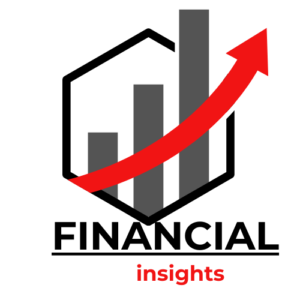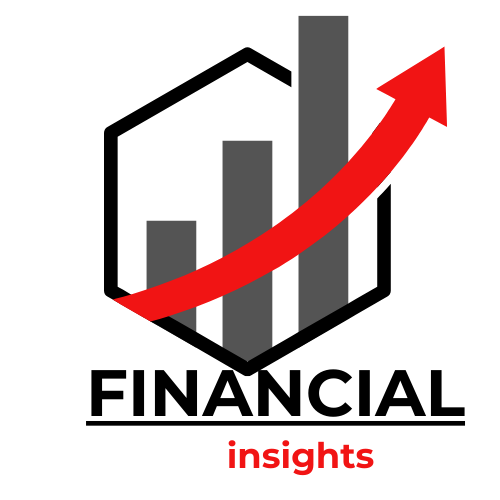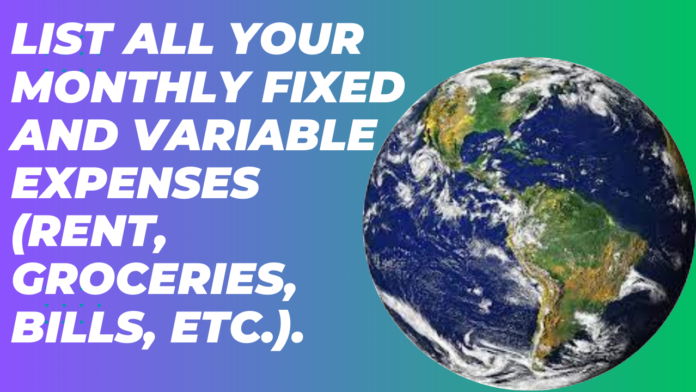Introduction to creating a budget
Are you tired of living paycheck to paycheck and wondering where all your money goes? Creating a budget can feel daunting, but it’s the key to taking control of your finances. By understanding your expenses, both fixed and variable, you can make informed decisions about how to allocate your hard-earned cash. In this guide, we’ll break down everything from rent payments to grocery bills, helping you identify where you stand financially. Whether you’re saving for a big purchase or just trying to make ends meet, knowing your monthly expenses is the first step toward financial freedom. Let’s dive in!
The importance of knowing your fixed and variable expenses
Understanding your fixed and variable expenses is crucial for financial stability. It allows you to see where your money goes each month. With this clarity, making informed decisions becomes easier.
Fixed expenses, like rent or insurance, remain constant. Knowing these helps in planning long-term finances without unexpected surprises.
On the other hand, variable expenses fluctuate monthly—think groceries and entertainment. By tracking these costs, you can identify areas for potential savings.
Awareness of both types empowers you to create a realistic budget that aligns with your goals. This insight fosters better spending habits and paves the way for achieving financial freedom.
Regularly reviewing these expenses also prepares you for emergencies or changes in income. Being aware of all expenditures leads to a more organized approach toward managing personal finances effectively.
Fixed vs Variable Expenses: What’s the Difference?
Understanding the difference between fixed and variable expenses is essential for effective budgeting. Fixed expenses remain constant month after month, regardless of your spending habits. Common examples include rent or mortgage payments, insurance premiums, and loan installments. These costs are predictable.
On the other hand, variable expenses fluctuate based on consumption or lifestyle choices. Groceries, utilities, and entertainment fall into this category. Since they can vary greatly from one month to another, tracking them requires diligence.
This distinction helps in planning your finances effectively. By knowing which costs are fixed versus those that can change, you gain better control over your budget. It allows for more accurate forecasting of monthly cash flow and aids in identifying areas where adjustments can be made if needed.
Recognizing these differences forms a solid foundation for any financial strategy moving forward.
List of Common Monthly Fixed Expenses (rent, insurance, etc.)
When budgeting, it’s vital to identify your common monthly fixed expenses. These are costs that remain constant each month, giving you a reliable foundation for your financial planning.
Rent or mortgage payments often top the list. They represent a significant portion of many individuals’ budgets and typically do not fluctuate from month to month.
Insurance is another essential fixed expense. This can include health insurance, car insurance, and homeowners or renters insurance. Each type provides necessary protection but comes with a consistent premium due every month.
Loan repayments also fall under this category. Whether it’s student loans or personal loans, these amounts usually stay the same unless you refinance.
Subscriptions for services like streaming platforms or gym memberships should be considered as part of your fixed expenses since they recur regularly without much variation in cost. Recognizing these elements helps ensure you’re aware of your non-negotiable financial commitments.
List of Common Monthly Variable Expenses (groceries, utilities, etc.)
Monthly variable expenses can fluctuate, making them a crucial part of your budget. These costs change depending on usage or consumption each month.
Groceries are typically the largest variable expense for many households. From fresh produce to pantry staples, these costs can vary based on meal planning and dietary choices.
Utilities also fall under this category but can be tricky. While some months may see higher electricity bills due to summer air conditioning or winter heating needs, others might be lower with mindful energy use.
Transportation is another vital area. This includes fuel costs that depend heavily on how much you drive and the price of gas fluctuations.
Entertainment expenses like dining out and leisure activities often shift from month to month. Planning ahead helps manage these unpredictable costs while allowing room for enjoyment in your life.
How to track and categorize your expenses
Tracking and categorizing your expenses is essential for effective budgeting. Start by choosing a method that suits you best—be it an app, spreadsheet, or pen and paper.
Once you’ve decided on a format, create categories based on your fixed and variable expenses. Common classifications include housing costs, groceries, transportation, insurance, and entertainment. This will help you see where your money goes each month.
Record every expense as it occurs. Timely updates prevent forgetting small purchases that can add up quickly. Be diligent in noting down every transaction to ensure accuracy.
Review your entries regularly to identify spending patterns. This insight can guide future financial decisions and highlight areas where adjustments may be necessary.
Don’t hesitate to adjust categories as needed; flexibility allows for better tracking of changing habits or unexpected expenses throughout the year.
Tips for reducing fixed and variable expenses
Start by reviewing your subscriptions. Many people forget they’re paying for services they rarely use. Cancel what you don’t need.
Next, consider negotiating bills. Service providers often have promotions or discounts available if you ask.
For groceries, create a meal plan each week to minimize impulse buys. Stick to a shopping list and avoid shopping when hungry.
Cut down on energy costs by using energy-efficient appliances and turning off lights when not in use. Small changes can lead to significant savings over time.
When it comes to transportation, consider carpooling or using public transport whenever possible. This not only reduces fuel expenses but also cuts down on wear and tear on your vehicle.
Shop around for insurance rates annually. Different companies offer various rates that may save you money without sacrificing coverage quality.
Creating a budget with your monthly expenses
Creating a budget starts with understanding your monthly expenses. Begin by listing all fixed and variable expenses, ensuring nothing is overlooked.
Next, categorize these expenses into essential and non-essential items. This clarity helps you see where your money goes each month.
Once categorized, allocate specific amounts to each category based on past spending patterns. Use tools like spreadsheets or budgeting apps for convenience and accuracy.
Don’t forget to leave room for savings and unexpected costs. A good rule of thumb is the 50/30/20 method—50% for needs, 30% for wants, and 20% for savings or debt repayment.
Regularly review your budget to adapt it as needed. Monthly adjustments can keep you aligned with changes in income or expense patterns.
Conclusion
Creating a budget can be both empowering and enlightening. By clearly identifying your fixed and variable expenses, you gain insight into your financial habits and priorities. Understanding the differences between fixed vs variable expenses is crucial for effective budgeting. Fixed expenses, such as rent or insurance, remain constant monthly. In contrast, variable expenses fluctuate based on lifestyle choices—think groceries or entertainment.
Tracking these costs helps you manage spending effectively. You might discover opportunities to cut back on certain areas without sacrificing quality of life. For instance, swapping out premium brands for store alternatives can significantly reduce grocery bills.
Additionally, knowing how to categorize these expenses allows you to create a more precise budget that reflects your actual needs and goals. The total variable expenses formula aids in assessing how much flexibility exists within your budget each month.
By staying mindful of both types of expenditures and actively seeking ways to minimize them when possible, you’re setting yourself up for better financial health moving forward. This proactive approach will not only help in meeting short-term goals but also contribute towards long-term stability and success in managing finances efficiently.


